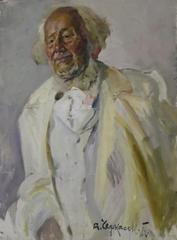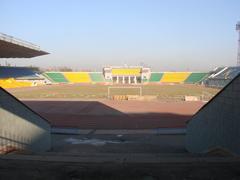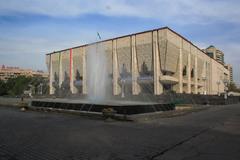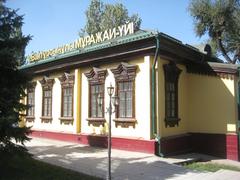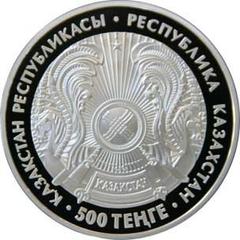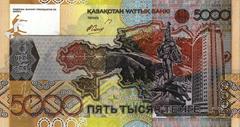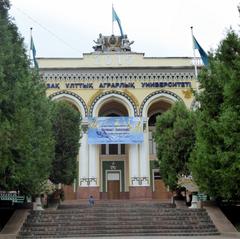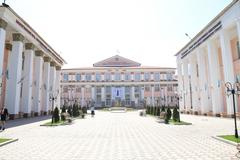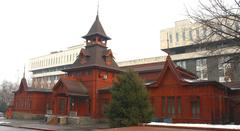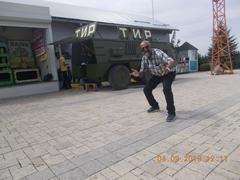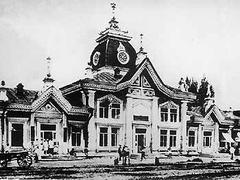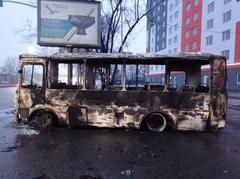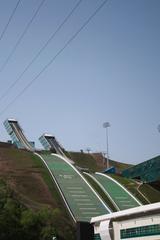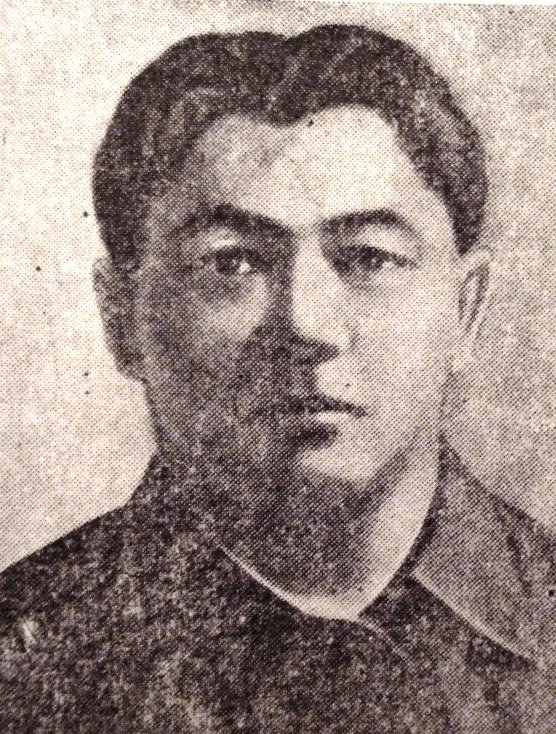
Uraz Kikimovich Jandosov Site: Visiting Hours, Tickets, and Guide in Almaty, Kazakhstan
Date: 15/06/2025
Introduction
The Uraz Kikimovich Jandosov Memorial in Almaty, Kazakhstan, stands as a powerful symbol of the country’s turbulent Soviet past and the enduring legacy of one of its most influential reformers. Uraz Kikimovich Jandosov (1899–1938) was a visionary Kazakh politician, economist, and educator who played a formative role in shaping the administrative and cultural identity of early Soviet Kazakhstan. Despite making significant contributions to education, land reform, and national self-determination, Jandosov became a victim of Stalin’s Great Purge and was executed in 1938. Today, his memory is honored throughout Almaty via statues, monuments, and educational plaques—each a testament to Kazakhstan’s path toward modern nationhood (peoplepill.com, welcome.kz).
This guide provides everything you need to plan a meaningful visit to the Uraz Jandosov memorials in Almaty: historical context, visitor hours, ticketing, accessibility, nearby attractions, etiquette, and practical travel tips. Whether you are passionate about history or simply exploring Almaty’s cultural sites, this article ensures your experience is both insightful and memorable.
Table of Contents
- Early Life and Background
- Political Career and Role in Soviet Kazakhstan
- Persecution and Execution
- Legacy and Historical Significance
- Connection to Almaty and Memorial Sites
- Visiting the Uraz Jandosov Memorial: Hours, Tickets & Travel Tips
- Location and Accessibility
- Health, Safety, and Practical Tips
- Conclusion and Recommendations
- References
Early Life and Background
Uraz Kikimovich Jandosov was born on February 20, 1899, in the village of Lyubov, Semirechye Oblast, within the Russian Empire’s borders—now modern-day Kazakhstan. Raised during a period of immense change, he witnessed the collision of traditional Kazakh nomadic culture with Russian colonial expansion. The late 19th and early 20th centuries saw the introduction of new educational opportunities, including Kazakh-language schools, which fostered a generation of reform-minded intellectuals like Jandosov (peoplepill.com, welcome.kz).
Political Career and Role in Soviet Kazakhstan
Following the Russian Revolution of 1917, Jandosov emerged as a prominent political leader advocating for Kazakh rights within the evolving Soviet system. He took on vital roles in the Kazakh Autonomous Socialist Soviet Republic (ASSR), championing land reforms, educational initiatives, and economic modernization. Jandosov’s policies emphasized the importance of national identity and self-determination, positioning him as a central figure in Kazakhstan’s early 20th-century transformation (peoplepill.com, welcome.kz).
Persecution and Execution
Despite his accomplishments, Jandosov was targeted during Stalin’s Great Purge. Arrested in 1938 on fabricated charges of anti-Soviet activity, he was executed in Alma-Ata (now Almaty) on March 2, 1938. His life and tragic fate exemplify the loss of an entire generation of Kazakh intellectuals and reformers during this repressive era (peoplepill.com).
Legacy and Historical Significance
Jandosov’s commitment to education, reform, and cultural preservation left an indelible mark on Kazakhstan. Today, he is remembered as a symbol of national resilience and a martyr of Soviet political repression. His legacy continues to inspire efforts toward modernization, education, and cultural pride in Kazakhstan (welcome.kz).
Connection to Almaty and Memorial Sites
Almaty—formerly Alma-Ata and the site of Jandosov’s execution—remains the central hub for commemorating his contributions. The city boasts several memorials, statues, and dedicated streets that invite both locals and visitors to reflect on Kazakhstan’s journey through Soviet and post-Soviet history (britannica.com, statemag.state.gov).
Visiting Uraz Kikimovich Jandosov Memorials in Almaty
- Location: Most memorials are located centrally, particularly along Jandosov Street and near public parks.
- Accessibility: Easily reached by public transport, taxi, or on foot from the city center.
- Hours: Outdoor memorials are accessible 24/7; museums typically operate Tuesday–Sunday, 10:00 AM–6:00 PM (closed Mondays).
- Tickets: Outdoor monuments are free; museums may charge a modest entrance fee (300–600 KZT).
- Guided Tours: Available through local operators, often focusing on Soviet history and Jandosov’s impact.
- Nearby Attractions: Central State Museum, Panfilov Park, Ascension Cathedral.
Visiting the Uraz Jandosov Memorial: Hours, Tickets & Travel Tips
Location and Physical Description
The Uraz Jandosov Memorial is situated in a leafy area of Almaty, often at the intersection of Jandosov Street and Gagarin Avenue. The monument is typically a life-sized statue of Jandosov in a contemplative pose, crafted in granite and bronze. The site is landscaped with flowerbeds and benches, offering a tranquil space for reflection (Silk Road Adventures).
Artistic and Symbolic Elements
The design reflects Soviet monumental art with Kazakh motifs, symbolizing durability and vision. Inscriptions in Kazakh and Russian highlight Jandosov’s achievements and ideals.
Nearby Attractions
Combine your visit with other historical sites:
- Panfilov Park: Site of the Ascension Cathedral and WWII memorials (Lonely Planet)
- Central State Museum: Extensive exhibits on Kazakh history (ExploreTravelOasis)
- Kazakh Museum of Folk Musical Instruments: Showcasing local traditions (Fabio Nodari Photo)
Etiquette and Local Customs
- Dress modestly and behave respectfully.
- Avoid loud conversations and do not climb on the statue.
- Photography is allowed; be mindful of others.
- Commemorative events: Observe quietly and respectfully during ceremonies.
(Audiala)
Educational and Cultural Impact
The memorial is a focal point for educational programs, public ceremonies, and cultural events—particularly on anniversaries of Jandosov’s birth, execution, and national remembrance days.
Annual Events and Commemorations
Ceremonies are held on key dates such as April 2 (birthday), February 19 (execution anniversary), and May 31 (Remembrance Day for Victims of Political Repression).
Frequently Asked Questions (FAQ)
Q: How do I get to the Uraz Jandosov memorials?
A: They are centrally located and accessible by bus, metro, taxi, or on foot.
Q: Is there an entrance fee?
A: Outdoor memorials are free; museum entry may require a ticket.
Q: Are guided tours available?
A: Yes, several local operators offer guided visits.
Q: Is the site accessible?
A: Most memorials are wheelchair-friendly; check ahead for specific museum accommodations.
Q: What is the best time to visit?
A: Spring and autumn for pleasant weather; early morning or late afternoon for quiet reflection and good photography light.
Location and Accessibility
- Address: Typically along Jandosov Street, near Gagarin Avenue.
- Transport: Accessible by public bus, metro, taxi, or ride-hailing apps (Yandex Go, inDriver). Confirm your route to avoid unnecessary detours (Mrs Daaku Studio).
- Parking: Street parking is available but may be limited.
- Pedestrian Access: The area is pedestrian-friendly, with well-maintained sidewalks.
Health, Safety, and Practical Tips
- Safety: Almaty is generally safe, but remain vigilant against pickpocketing in crowded areas (Travel.gc.ca).
- Weather: Spring (April–June) and autumn (September–October) are ideal; winters can be harsh, and summers hot.
- Air Quality: Monitor local air quality, especially in winter.
- Water: Drink bottled water.
- Currency: Kazakh tenge (KZT); cards widely accepted, but carry some cash (Travel.gc.ca).
- Language: Kazakh and Russian are common; English is increasingly spoken in tourism settings.
Conclusion and Recommendations
The Uraz Jandosov memorials in Almaty offer a powerful window into Kazakhstan’s Soviet past and the enduring spirit of reform and resilience. With free year-round access, central locations, and proximity to other major sites, these memorials are essential stops for visitors interested in history, culture, and national identity.
Visitor Tips:
- Visit during spring or autumn for comfort and beauty.
- Combine your trip with nearby museums and parks.
- Observe respectful etiquette, especially during commemorative events.
- Consider guided tours for deeper historical context.
- Download the Audiala app for personalized guides and updates.
For the latest information, consult the Almaty Tourism Official Website and follow local tourism channels.
References
- peoplepill.com
- welcome.kz
- britannica.com
- statemag.state.gov
- silkadv.com
- lonelyplanet.com
- exploretraveloasis.com
- fabionodariphoto.com
- mrsdaakustudio.com
- kazguidedtours.com
- travel.gc.ca
- wanderon.in
- astanatimes.com
- audiala.com
- journalofnomads.com
- travelmax.in
- againstthecompass.com

